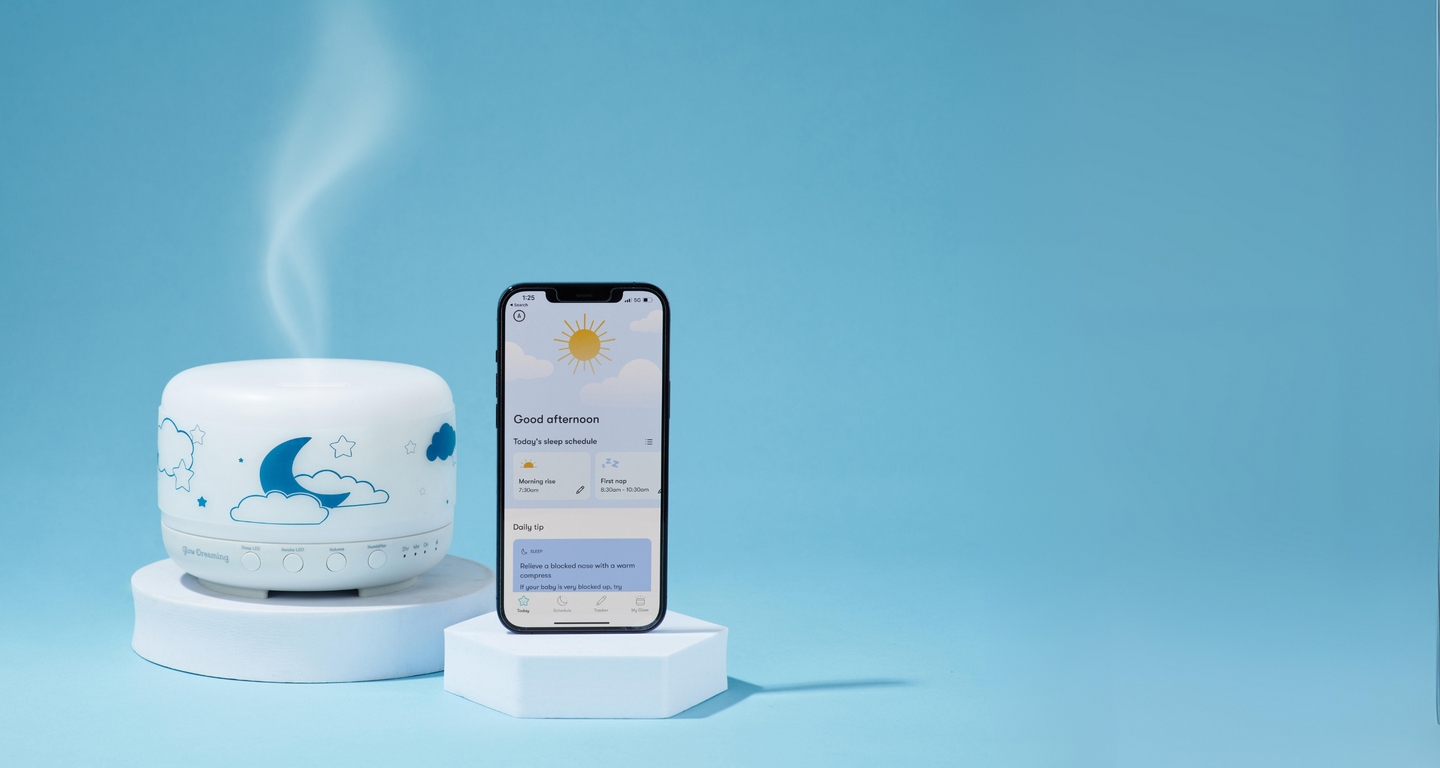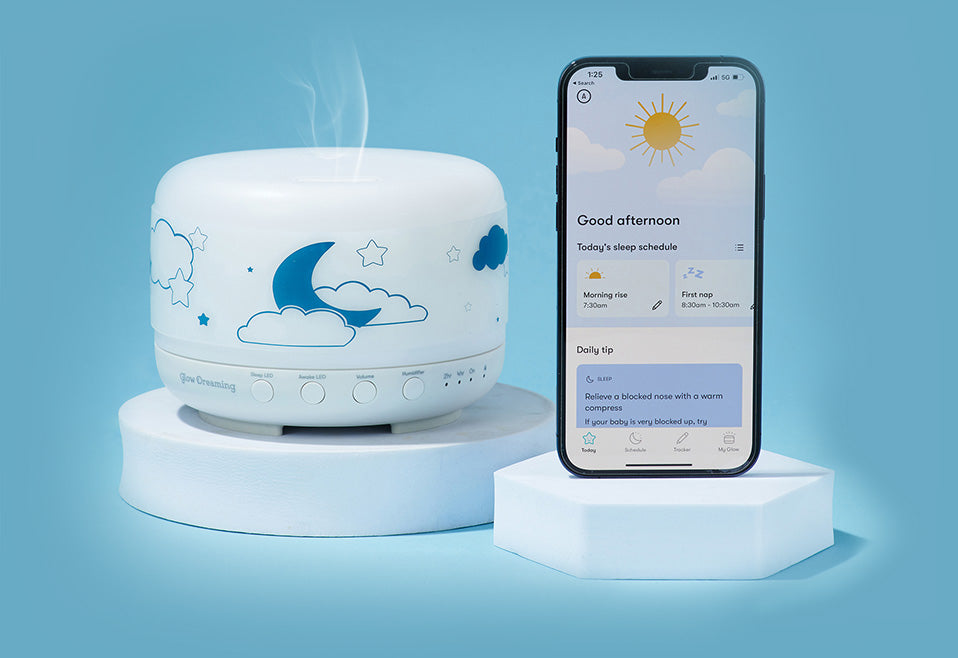We have put together a list of recommended activities based on age that will aid in helping your little love get a good night sleep at the end of the day!
0-4 months
At this age, there are two main forms of physical activity we recommend - Tummy Time and Floor Play.
Tummy Time: this is so great for their physical development, as it builds up their neck and back strength, and is the first step towards rolling over and sitting up!
We recommend doing Tummy Time before and after each nappy change.
Place your baby on their change-mat on their back.
Gently roll them over onto their tummy, so they feel the rolling motion.
Remove your hands from your baby and countdown from 10, out loud: your baby may fuss, it's common for babies to dislike tummy time! Counting out loud is great for their brain development and will help you track of how long it's been, so you can be confident your little one is getting the full amount of time.
Gently roll your baby back over onto their back - if they became distressed, of course you can pick them up for a lovely cuddle now.
Floor Play: between feeds, it's great to give your baby space to play on the floor.
Clear a space on the floor of all toys and place your baby down on their back.
Offer them one toy, in their line of sight but just out of reach. Let them wriggle and reach for the toy, moving their body and using up lots of energy.
Once they become distracted or bored, change out the toy for something different. It's important to only offer one toy at a time, as little ones can get overstimulated easily, making it harder for them to focus and stay engaged.
4-6 months
Tummy Time and Floor Play are still very important at this age.
Independent sitting practice: Sit your baby up on the floor (not in a rocker or baby chair), and position yourself nearby so you can support or steady your baby if needed. Let your baby practice sitting up on their own, using their own muscles to keep them upright. You can hold their hands gently in your own if they need extra support.
Rolling practice: many babies will learn to roll from their tummy to their back first, particularly if they dislike Tummy Time.
Tummy to back: clear a space on the floor and place your baby down on their tummy. Straighten out one of your baby's arms, and then hold their hips firmly and guide them over onto that straightened arm. Once your baby is lying on their side, gravity may take over and they may complete the roll onto their back naturally, or you may need to help them with that final flip.
Back to tummy: clear a space on the floor and place your baby down on their back. Straighten out your baby's left leg, and then gently tip the right hip up and over, until your baby is lying on their side. Your baby may actively participate at this point and finish the roll, or your may have to continue to support the hip to encourage your baby to roll all the way over. You may need to adjust your baby's arms if they get a bit stuck.
6-9 months
Tummy Time, Floor Play, Independent sitting and Rolling practice are still important at this age.
Crawling practice: support your baby in the 4-point position by placing them on their hands and knees, and holding your baby under their tummy. If your baby is not strong enough and needs more support, balance your baby so their tummy is on your knee or over your thigh while they have their hands and feet on the floor.
Your baby will start to rock forwards and backwards on their knees when they are strong enough.
When they start to extend one hand forward, you can gently encourage the same foot and knee to slide forward.
Standing practice: clear a space on the floor and place something soft underneath your baby (like a mat or blanket). Sit your baby upright in front of you, so your baby is facing you. Hold onto their hands and raise them up to a standing position. Countdown from 10 out loud (hearing you counting is great for their mental development) and then sit your baby back down. Wait another 10 seconds, then repeat the excerise.
Your baby may also be able to pull themselves up to a standing position on their own using furniture- this is a great activity, just make sure you're nearby for support.
Your baby may also be able to pull themselves up to a standing position on their own using furniture- this is a great activity, just make sure you're nearby for support.
Row, Row, Row Your Boat: sit your baby upright on the floor, and sit behind them for support. Hold onto your baby's arms and row them back and forth as you sing Row, Row, Row Your Boat together.
9-12 months
All the previous activities are still great exercise, and important for helping your baby reach their developmental milestones.
Crawling games: let your baby crawl around the house to use up energy - you can place a single toy in their eye-line to encourage them to reach out for the toy.
Walking practice: Place a toy up on the couch or a piece of furniture, and encourage your baby to pull themselves to standing so they can reach the toy and play with it. When they tire of that toy, take it away and place a second toy further along the couch, to encourage your baby to cruise along the edge of the furniture to reach it. Once your baby is confident in cruising alongside a piece of furniture, they will be ready to start engaging with a baby push walker - these give your baby great support to learn to walk independently, and encourage them to walk on their flat feet rather than up on their toes.
12-18 months
Walking, crawling, floor play and tummy time are still important for your little one.
Jumping down: clear a space on the floor and place a sturdy baby step on the floor (like you might use to reach the sink or a high cupboard). Demonstrate the skill for your little one then encourage them to try. Hold their hands for support as they climb up onto the step, then countdown from three and encourage them to jump down. Hold their hands to keep them safe until they get the idea and the strength to jump down independently.
Jumping forward: Place two towels on the floor, one step apart from each other (ideally each towel will be a different colour). Demonstrate the movement for them first - bend your knees as deeply as you can, and jump forward with both feet at the same time - make sure you're having fun! Get your little one to stand on one towel, and position yourself at the far edge of the other towel, facing your little one. Encourage them to leap to your towel. Hold your little one's hands nice and tight so you can help them. Your little one may take a large step at first, or they may land on their bottom.
Dance parties are also great fun - put your favourite song on and dance together for a few minutes, then put on another song and dance some more!
18-24 months
Walking, crawling, jumping and floor play are still super important for your little one.
Climbing up and down the stairs: stay close to your little one as they practice pulling themselves up the stairs. Show your little one how to go down the stairs safely on their bottom, and when you get to the bottom, climb back up together.
Ball games: you can start to play simple ball games together. Your little one can pick a ball up and throw it from over their heads.
Unwrapping presents: your little one is ready at this age to practice some fine motor skills which can also be quite active. Wrap a small box or ball in a scrap of fabric, securing it loosely with masking tape. Your little one can practice unwrapping over and over again.
Dance parties are getting more and more energetic as your little one's gross and fine motor skills improve - dance to 3-4 songs together every night!
24 months - 5 years
Walking, crawling, running, jumping and floor play are still very important for your little one.
Shapes and movements: create shapes on the floor with painters tape (like squares, triangles, letters and numbers) and give instructions like: run to the circle, jump on the letter A, walk slowly to the number 4, spin around on the triangle...
Walking puzzle: scatter puzzle pieces around the room and ask your little one to find each piece and fit it into place before going to get the next piece.
Ten pin bowling: line up some empty plastic bottles and invite your little one to throw a ball or cushion to try and knock them down
Dance parties are some of the best fun you can have together - dance to 5 songs throughout your evening!


